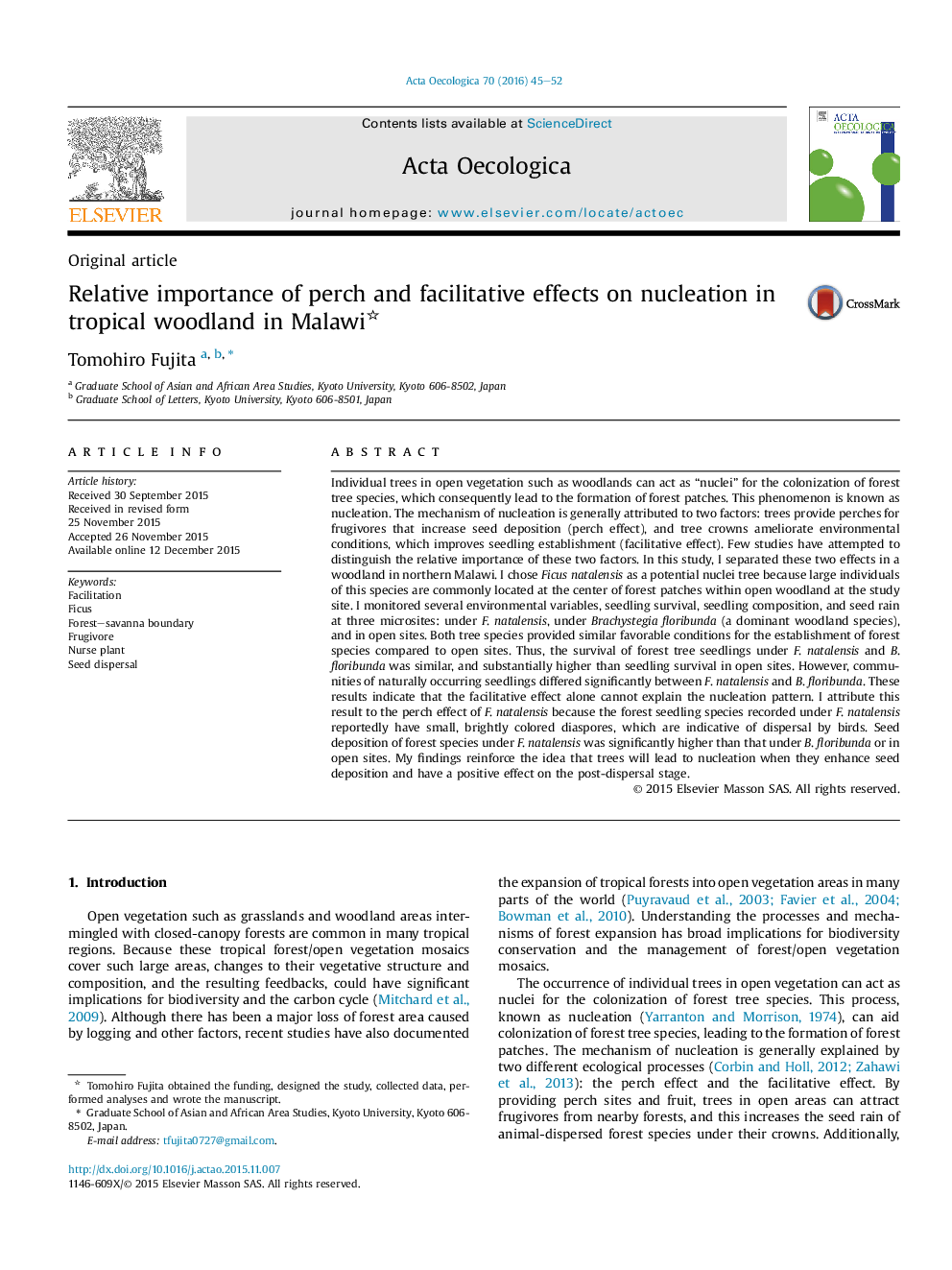| کد مقاله | کد نشریه | سال انتشار | مقاله انگلیسی | نسخه تمام متن |
|---|---|---|---|---|
| 4380799 | 1617702 | 2016 | 8 صفحه PDF | دانلود رایگان |
• I analyzed the importance of perch and facilitative effects on nucleation separately.
• Perch effects mediated by freshly fruiting tree were essential for forest nucleation.
• Facilitative effects under the tree also affected the dynamics of nucleation.
• Trees that promote seed deposition and exert facilitative effects drive nucleation.
Individual trees in open vegetation such as woodlands can act as “nuclei” for the colonization of forest tree species, which consequently lead to the formation of forest patches. This phenomenon is known as nucleation. The mechanism of nucleation is generally attributed to two factors: trees provide perches for frugivores that increase seed deposition (perch effect), and tree crowns ameliorate environmental conditions, which improves seedling establishment (facilitative effect). Few studies have attempted to distinguish the relative importance of these two factors. In this study, I separated these two effects in a woodland in northern Malawi. I chose Ficus natalensis as a potential nuclei tree because large individuals of this species are commonly located at the center of forest patches within open woodland at the study site. I monitored several environmental variables, seedling survival, seedling composition, and seed rain at three microsites: under F. natalensis, under Brachystegia floribunda (a dominant woodland species), and in open sites. Both tree species provided similar favorable conditions for the establishment of forest species compared to open sites. Thus, the survival of forest tree seedlings under F. natalensis and B. floribunda was similar, and substantially higher than seedling survival in open sites. However, communities of naturally occurring seedlings differed significantly between F. natalensis and B. floribunda. These results indicate that the facilitative effect alone cannot explain the nucleation pattern. I attribute this result to the perch effect of F. natalensis because the forest seedling species recorded under F. natalensis reportedly have small, brightly colored diaspores, which are indicative of dispersal by birds. Seed deposition of forest species under F. natalensis was significantly higher than that under B. floribunda or in open sites. My findings reinforce the idea that trees will lead to nucleation when they enhance seed deposition and have a positive effect on the post-dispersal stage.
Journal: Acta Oecologica - Volume 70, January 2016, Pages 45–52
